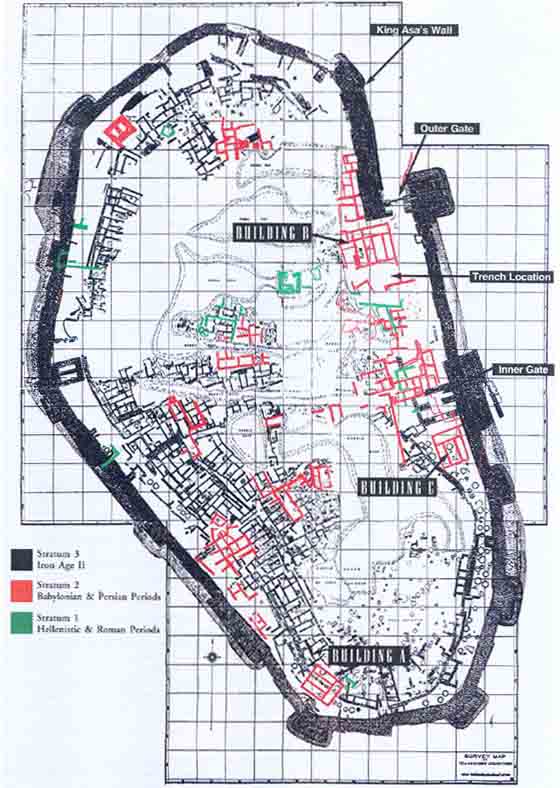Mizpah: The Missing Years
Sidebar to: Mizpah: Newly Discovered Stratum Reveals Judah’s Other Capital

Embedded in William Frederic Badè’s meticulous plan of Mizpah are telltale clues that the city thrived throughout the Babylonian and Persian periods (c. 586–400 B.C.). The plan (opposite) was published in black-and-white in the final report on the site. Badè identified most of the remains as Iron Age II (1000–586 B.C.). But several irregularities in the plan, recognizable only with the help of Badè’s more detailed field plans, enabled author Zorn to distinguish separate strata, indicated here by different colors. The earliest, Iron Age remains appear in black; the recently recognized remains of the Babylonian and Persian periods are in red; and later, Hellenistic and Roman period (332–37 B.C.) remains appear in green.
A. A wall runs down the center of a four-room house (Building A), practically filling its central chamber. The photo (below) and detail of the plan (beneath photo) clearly show that the house lies on top of the wall—indicating that the house is later. Although Badè failed to detect two structures here, Zorn claims that the thick lower wall was part of the Iron Age II city’s earliest defenses, formed by the linked back walls of Israelite homes that encircled the city (Stratum 3). The upper house (a four-room house larger than those dating to the Iron Age) Zorn dates to the Babylonian and Persian periods (Stratum 2, 586—c. 400 B.C.).
Already a library member? Log in here.
Institution user? Log in with your IP address.

